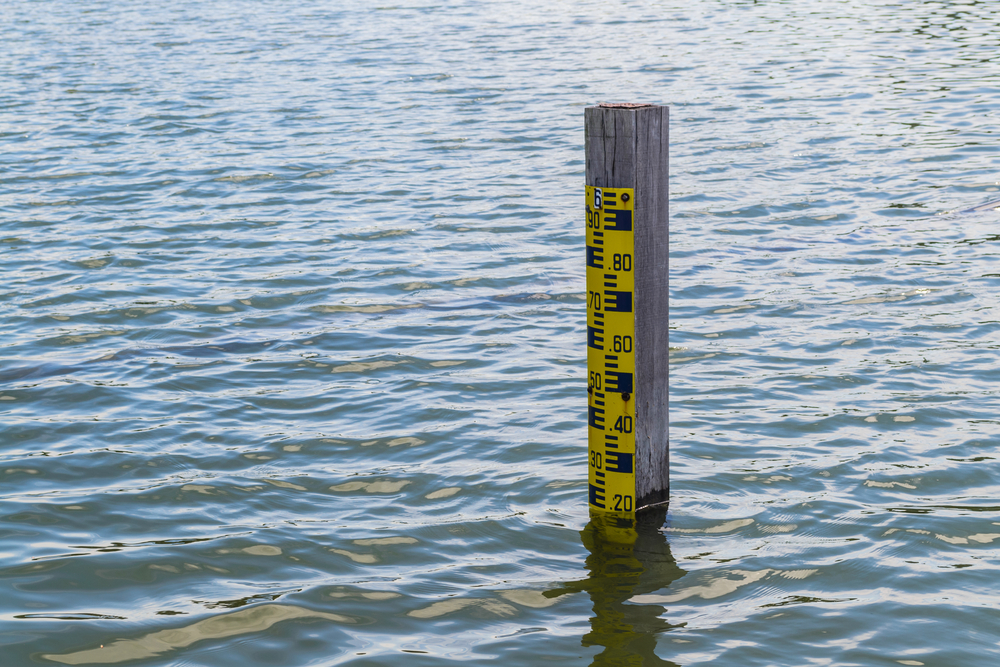Forecasts for Great Lakes water levels to keep rising means Michigan’s related costs will climb into the hundreds of millions of dollars as the state confronts the impact.
That’s the initial conclusion offered by directors of state agencies after the first statewide task force meeting to tackle high water issues that also extend inland.
“The Great Lakes are at record levels, rivers are full and soils are saturated,” said Gary McDowell, director of the state Department of Agriculture and Rural Development.
“We just can’t absorb any more.”
Among the expected impact:
- About 40 roads across the state are affected by high water, said Michigan Department of Transportation Director of Bureau of Development Brad Wieferich. That ranges from slope failures to failing drainage systems. The department is trying to quantify the risk, with initial estimates of $5 million immediate repairs and $100 million to make permanent fixes, which could include moving some roads.
- Historic rains suppressed Michigan’s $104 billion agriculture industry, and “this year is probably going to be more bleak than last year,” said McDowell. In 2019, over 920,000 acres went unplanted, he said. That number could climb this year.
- Department of Natural Resources is “trying to understand and evaluate where some of our most critical infrastructure challenges are,” said Director Dan Eichinger. He has no ballpark costs, but said the risk looks at the numerous coast shoreline facilities operated by the state parks system, including camp sites, that generate user fees to fund the department.
The early risk snapshots were detailed when state and federal officials spoke to news media on Monday after their first Michigan High Water Coordinating Summit.
That event, which also involved local leaders from around the state, was set up for all of them to address “the challenges in front of us” from high water, said Liesl Eichner Clark, director of Michigan Department of Environment, Great Lakes and Energy.
“We’ve had the wettest September through December on record,” Clark said. That follows going from record low levels to record high levels in record time. Over the past six years, she said, “lake levels changed faster than ever.”
Meanwhile, she added, the state had the wettest 12-60 months in recorded history.
That combines to raise questions about the risks facing Michigan’s shoreline and infrastructure in the coming year – and beyond.
“How do we deal with this differently and think about the next 8 to 10 months?” Clark said was the driving question during the summit.
According to the U.S. Army Corps of Engineers, lakes Michigan and Huron both set new record high January levels, previously set in 1987. Lake Superior set new record high January levels previously set in 1986.
“It is likely that water levels on lakes Michigan and Huron will set new monthly mean record high levels over the next six months,” John Allis, chief of the Great Lakes Hydraulics and Hydrology Office, Detroit District, said last week. “This sets the stage for coastal impacts and damages in 2020 similar to, or worse than, what was experienced last year.”
By mid-2019, Michigan residents were seeing warnings about shoreline high waters, which were blamed for several drownings and homes falling into Lake Michigan. That’s an ongoing concern from the southwest corner of the state up the coast, as the erosion continues unabated.
Keith Kompoltowicz of the U.S. Army Corps said the persistent wetter-than-average conditions will keep water levels high. And while history shows concerns and damages from high water levels in 1986, within a few years drought abated the problems.
“We see no clear sign that’s upcoming,” he said in response to a question about whether waiting out the high water was a viable strategy for shoreline property owners.
The high water summit comes a few weeks after testimony before the Legislature about the impact of high Great Lakes water and the erosion it’s causing across communities.
Last week, Gov. Gretchen Whitmer announced several initiatives in her proposed 2021 budget to help municipalities along the shoreline deal with problems stemming from the high water, which ranges from damage to roads and bike trails to disappearing beaches and other infrastructure risks.
“I called for the Michigan High Water Coordinating Summit to ensure our state agencies lead the way with a highly coordinated and cooperative response to high water impacts,” Gov. Gretchen Whitmer said. “With our local and federal partners, our team will do everything we can with the resources at our disposal to help Michigan families and communities living through extraordinarily difficult circumstances.”
So far, there is no movement to declare a state of emergency over high water levels, said Inspector James Grady of the Michigan State Police. Multiple counties have made the request, but the state hasn’t reached disaster level yet, he said.
“Typically a state declaration is requested by local jurisdictions after it’s exhausted its resources,” Grady said.
Clark said the high water action team will start meeting regularly. In other steps, town hall meetings will be scheduled around the state this spring. Officials said details will be announced soon.
EGLE already has streamlined the permitting process for shoreline property owners seeking to build seawalls and take other measures to protect their property.
“We’ve been communicating with residents on the lakeshore that they need to take the actions necessary,” Clark said.
“There aren’t a lot of things that stop Mother Nature,” she said. “We know some of these solutions really are temporary in nature, and we foresee challenges going forward.”
This article appeared in MLive. Read more here.

